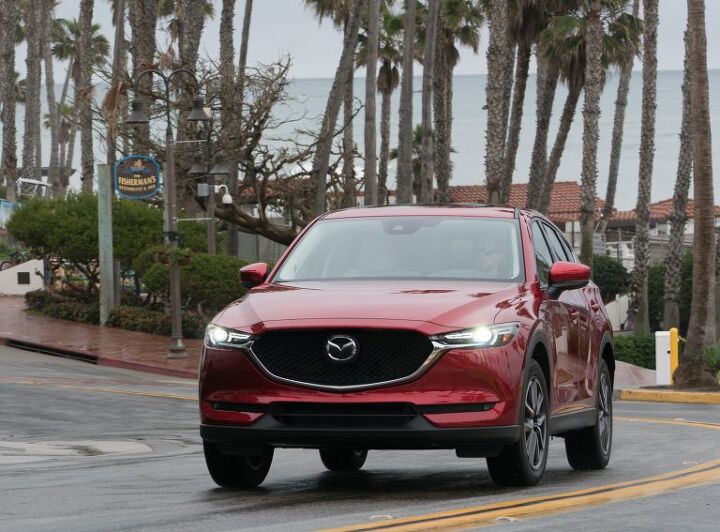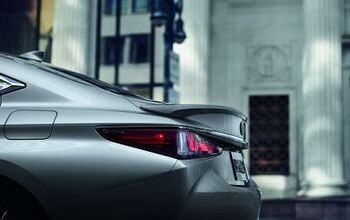Mazda and Toyota's Joint Venture Is Official, Tons of Corollas and a Mystery Model Await

There’s 4,000 new jobs coming to Huntsville, Alabama, but there’ll also be 150,000 unnamed Mazda crossovers rolling out to dealers across North America each year — assuming the model’s a success. Our money’s on Mazda giving its new child a name starting with “CX-.”
Mazda and Toyota made their 50-50 joint venture official this week, creating a business entity called Mazda Toyota Manufacturing, U.S.A., Inc. and boosting the presence of car manufacturing in the South. Production begins in 2021. For Mazda, it will be the company’s first assembly facility in the U.S., though it’s technically not a wholly-owned, standalone operation. There’ll be just as many Toyota Corollas leaving the factory as Mazdas.
While there are scant clues about the nature of Mazda’s mystery vehicle, the brand’s recent sales, plus a revealing loyalty report, suggest the company could have a hit on its hands.
“We hope to make MTMUS a plant that will hold a special place in the heart of the local community for many, many years,” said Mazda’s Executive Officer Masashi Aihara, who also holds the position of president of the venture.
To the best of anyone’s knowledge, the CX-3, CX-5, and CX-9 will remain in their respective places in Mazda’s lineup. The new model, almost certainly slotted towards the higher end of the lineup, is designed to appeal specifically to U.S. buyers, the company claims. Nor will it step on any models’ toes and cannibalize sales. This seems like a tall order, but Mazda isn’t known for its lazy, rushed judgement.
The company plans to devote its entire annual production capacity of 150,000 vehicles to this new crossover — a number higher than the sales of any existing Mazda model in the United States. Talk about high hopes. Even the brand’s top-selling model, the CX-5, didn’t reach that number in the U.S. last year (its best sales year to date), though it passes the 150k barrier if you add in Canadian sales. No other model comes close.
Actually, the CX-5 deserves further mention. After rising every year since its 2012 introduction, sales of the CX-5 seem to have exploded as of late. U.S. sales rose 13.7 percent in 2017 compared to the previous year. Over the first two months of 2018, sales are up 67.8 percent — enough to give the automaker its best February showing in the U.S. in 24 years. This, despite double-digit decreases in Mazda 3, 6, and MX-5 volume.
If the 2021 CX-? is able to garner this kind of demand, it won’t matter what buyers think of Mazda’s passenger cars, or even whether they exist.
Another item of note: Last week, Edmunds published its annual customer loyalty report, which delves into the likelihood of buyers trading in their vehicle for one of the same brand. In it was plenty of good news for Mazda.
For starters, SUV owners are most likely (75 percent) to stick with the same bodystyle at trade-in time. Loyalty among brands was also higher for Japanese automakers (83 percent). For Mazda, loyalty rates rose from 23 percent to 44 percent between 2007 and 2017 — the largest improvement of any mainstream automaker.
All of this sets up Mazda’s mystery vehicle for success, but there was another key finding in Edmunds’ report. It’s a doozy.
Mazda “has the distinction of having the vehicle with the highest number of return customers of any single vehicle in 2017 with its CX-5,” Edmunds discovered.
Will Mazda’s mystery vehicle be something passionately loyal CX-5 owners can move up to? A three-row with greater affordability than the CX-9, perhaps?
[Image: Mazda]

More by Steph Willems
Latest Car Reviews
Read moreLatest Product Reviews
Read moreRecent Comments
- Bd2 Ultimately, it comes down to price/whether it makes financial sense for buyers (right now, BEVs just aren't there, even with the tax credit). HEVs are finally seeing their place in the sun, decades after being a niche market; this is due to premium for HEVs having narrowed significantly with pure ICE, whereby buyers can recoup that after 2-3 years of ownership.
- MaintenanceCosts I've experienced three cars that were the first year of the model. The two I bought (first-off-the-boat 2004 TSX and midyear 2006 Civic) were both Hondas and were both flawless. The other one was my ex-stepmother's 1990 Land Rover Discovery. It was one of the very first Euro-spec models, a two-door with an asthmatic carbureted 3.5L V8 and a five-speed manual. Every part of the car broke at some point, including things like hatch hinges that really shouldn't break. It turned her off Land Rover forever, and her cars since have all been Subarus.
- MaintenanceCosts When I was living with my Bolt in a rental condo and charging from 120V in the garage, as soon as the association figured out what was happening, they asked me to pay $30 a month to cover the cost. That's pretty close to what I was using so I had no issue with it.
- SCE to AUX I've had mixed results with first-year cars:71 Pinto - good. 85 LeBron GTS - good. 96 Grand Voyager - good. 02 Passat B5.5 - bad. 05 Odyssey - bad. I also had a last-year car that was terrible (80 Bobcat), but most cars were crap then, anyway.
- Crown Go big or go home. Never understood the "economy version" that manufacturers make of a performance car.


































Comments
Join the conversation
I'm hoping for a SkyactivX plug in hybrid...
My guess is a shortened 2 row cx9.Basically the opposite of what Lexus did with the RX.Mazda has been able to jump out of the edge and murano segment and now compete with Lexus Acura Volvo Infinity.In fact 2 people I know ended up in Cx9 after starting out for MDX and RXs.